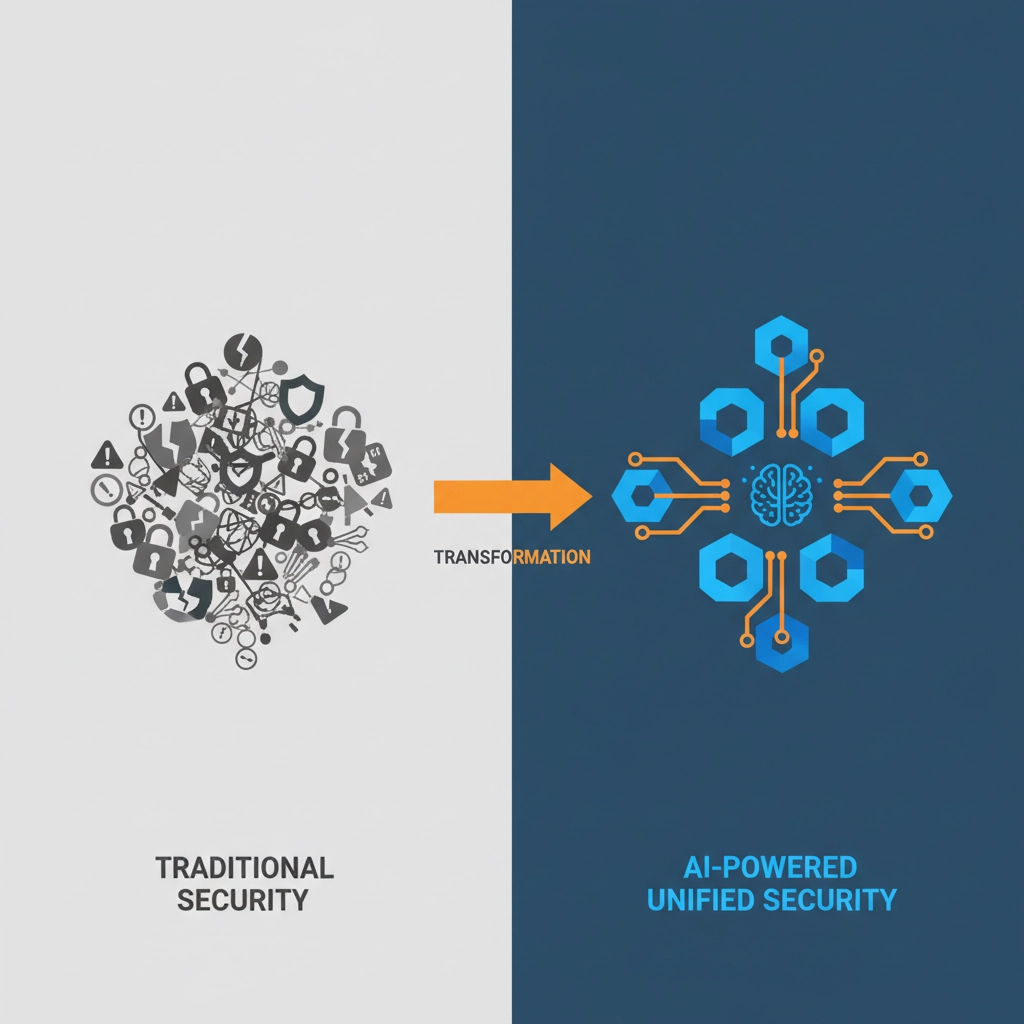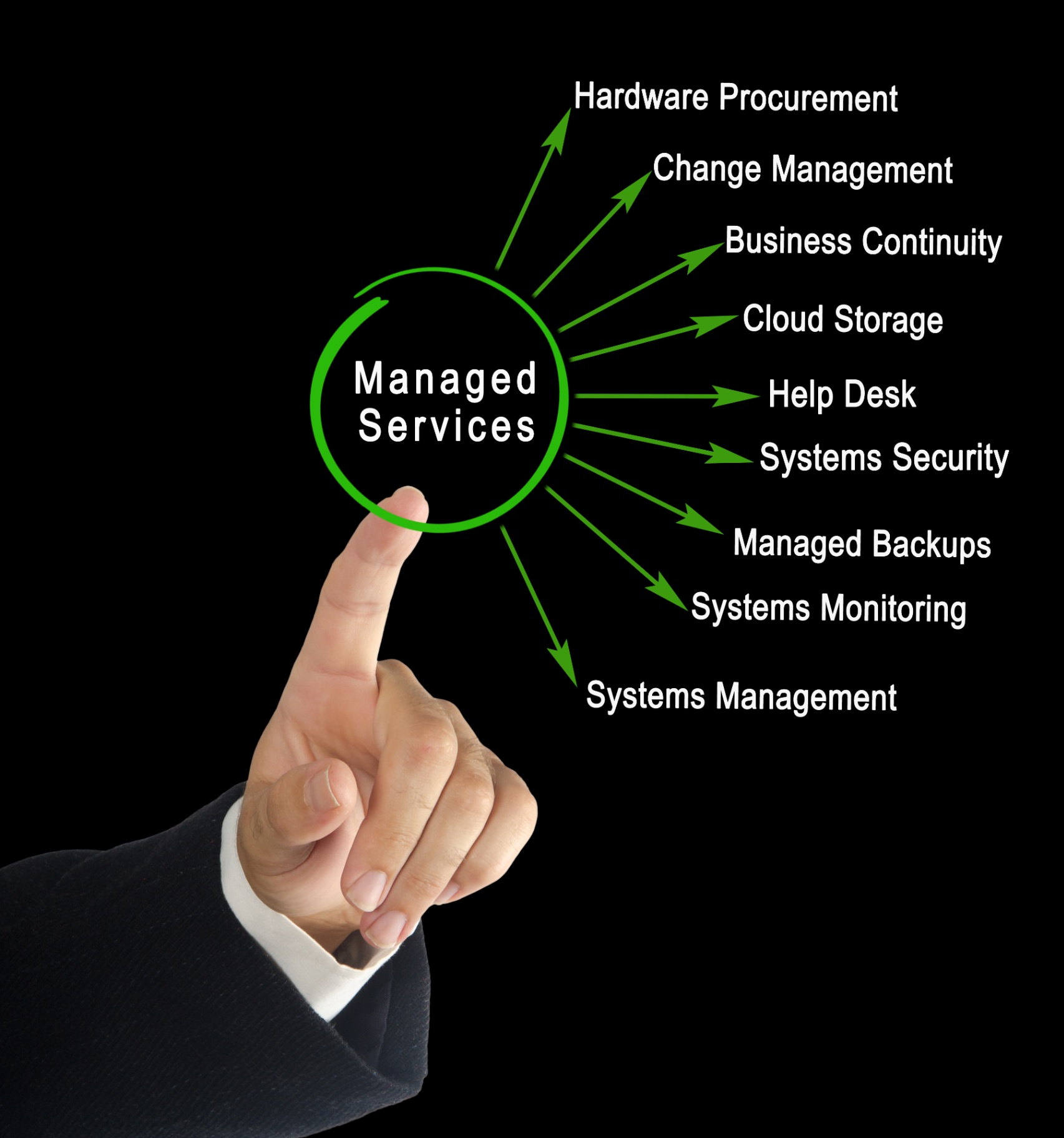You're staring at your growing technology needs and dwindling budget, wondering how other Connecticut businesses manage to stay competitive without breaking the bank on IT leadership. Your current setup works, but you know you need strategic guidance to scale properly. The question keeping you up at night: should you hire a full-time IT Director or explore Virtual CIO services?
This decision impacts more than just your IT budget: it shapes your entire technology strategy for years to come. Let's break down exactly what each option offers Connecticut small businesses and help you make the right choice for your specific situation.
Understanding the True Cost of IT Leadership in Connecticut
Before diving into comparisons, let's get real about what IT leadership actually costs in Connecticut's competitive market. The numbers might surprise you.
A full-time IT Director in Connecticut commands an average salary between $130,000-$160,000 annually. Add benefits, payroll taxes, and the hidden costs of recruitment, and you're looking at $180,000-$220,000 in total annual investment. That's before considering potential turnover costs, training expenses, or the risk of hiring someone whose skills don't match your evolving needs.
Virtual CIO services, on the other hand, typically run 15-25% of a full-time salary: roughly $20,000-$45,000 annually for most Connecticut small businesses. This dramatic cost difference alone makes many business owners take notice, but the story goes much deeper than simple math.
What Exactly Is a Virtual CIO?

A Virtual Chief Information Officer (vCIO) provides executive-level IT strategy and oversight through an outsourced model specifically designed for smaller organizations. Think of it as having a senior technology executive on retainer: someone with the experience and expertise of a Fortune 500 CIO, but available to your business on a flexible, part-time basis.
Virtual CIOs typically bring 15-20 years of enterprise IT experience across multiple industries. They've seen what works, what fails, and what trends actually matter versus what's just marketing hype. This breadth of experience becomes invaluable when making strategic technology decisions that will impact your business for years.
The role involves strategic technology roadmapping, vendor relationship management, budget planning and optimization, security risk assessment, compliance guidance, and technology performance monitoring. Essentially, all the high-level thinking that keeps your technology aligned with business goals: without the overhead of a full-time executive.
The Full-Time IT Director Model
Full-time IT Directors serve as the operational backbone of your technology infrastructure. They focus primarily on day-to-day management, team oversight, and tactical implementation of IT initiatives. In Connecticut's market, these professionals typically hold 10-15 years of experience and provide dedicated, on-site leadership for your technology operations.
The IT Director role centers around managing internal teams, overseeing daily operations, handling immediate crisis response, implementing specific projects, maintaining vendor relationships, and ensuring compliance with internal policies. They're the hands-on leaders who keep everything running smoothly from moment to moment.
Advantages of Full-Time IT Directors
The biggest advantage is constant availability. When systems go down at 2 AM, your IT Director can be on-site within an hour. This immediate response capability proves invaluable for businesses operating mission-critical systems that can't afford extended downtime.
Full-time directors also develop deep institutional knowledge about your specific systems, processes, and organizational culture. They understand exactly why certain configurations exist, know the history behind technology decisions, and can quickly identify when something doesn't look right in your environment.
Team management represents another strength. If you have multiple IT staff members, an IT Director provides consistent daily oversight, ensures projects stay on track, handles performance issues, and maintains team cohesion. This direct management often results in better productivity and fewer miscommunications.
Limitations of IT Directors
The most obvious limitation is cost. At $180,000+ annually in total investment, IT Directors represent a significant budget commitment for most Connecticut small businesses. This expense becomes harder to justify if your business doesn't require full-time IT management oversight.
Strategic limitations also emerge. Most IT Directors focus 70-80% of their time on operational tasks, leaving limited bandwidth for strategic thinking. While they excel at keeping current systems running, they may lack the broader industry perspective needed for forward-thinking technology planning.
Career development can become problematic in smaller organizations. IT Directors often plateau in their roles due to limited advancement opportunities, potentially leading to higher turnover as they seek growth elsewhere.
Virtual CIO Services: Strategic Technology Leadership

Virtual CIO services flip the traditional IT leadership model by prioritizing strategic oversight over operational management. Instead of focusing on daily task management, vCIOs concentrate on the big-picture decisions that drive long-term business success.
Strategic Planning Excellence
Virtual CIOs excel at technology roadmapping: creating 3-5 year plans that align your technology investments with business goals. They evaluate emerging technologies, assess their relevance to your industry, and recommend adoption timelines that maximize ROI while minimizing disruption.
Budget optimization becomes a key strength. vCIOs understand market pricing across hundreds of technology solutions and can identify cost-saving opportunities that often exceed their service fees. They know which software subscriptions you don't actually need, when to upgrade versus replace systems, and how to negotiate better vendor contracts.
Vendor Management and Procurement
One of the most valuable aspects of Virtual CIO services is vendor relationship management. vCIOs maintain relationships with dozens of technology suppliers, understand contract terms and pricing structures, and can leverage their experience across multiple clients to negotiate better deals.
This becomes particularly important as businesses increasingly rely on cloud services, SaaS applications, and specialized technology solutions. Managing 15-20 different vendor relationships while ensuring they all work together seamlessly requires significant expertise and time investment.
Risk Management and Compliance
Virtual CIOs bring enterprise-level risk management practices to smaller businesses. They understand regulatory requirements across different industries, can assess your security posture objectively, and provide recommendations based on actual threat landscapes rather than vendor marketing materials.
For Connecticut businesses dealing with regulations like HIPAA, SOX, or industry-specific compliance requirements, this expertise proves invaluable. The cost of compliance violations far exceeds Virtual CIO service fees, making this risk mitigation a strong ROI proposition.
Limitations of Virtual CIO Services
The primary limitation is availability for immediate crisis response. While most Virtual CIO providers offer emergency support, response times may be longer than having someone on-site full-time. This can be problematic for businesses operating systems that require immediate attention during outages.
Virtual CIOs also have limited visibility into daily operations. They can provide strategic guidance and periodic assessments, but may miss subtle issues that develop gradually over time. This makes them dependent on internal staff or managed service providers for operational intelligence.
Team management capabilities are limited since vCIOs typically don't have direct authority over internal IT staff. They can provide guidance and recommendations, but implementing changes often requires buy-in from internal managers or business owners.
When Virtual CIO Services Make Sense for Connecticut Businesses

Virtual CIO services prove most effective for specific business scenarios common among Connecticut small and medium businesses.
Revenue Range: $2M-$25M Annually
Businesses in this range typically have enough technology complexity to benefit from strategic guidance but lack the budget for full-time executive IT leadership. They often manage 10-30 employees, multiple locations, and various technology systems that need coordination.
Growing Technology Footprint
Companies experiencing rapid technology expansion: moving to cloud services, implementing new software systems, or dealing with integration challenges: benefit significantly from vCIO guidance. The strategic oversight helps ensure new technologies actually work together and support business goals.
Regulatory Compliance Requirements
Connecticut businesses in healthcare, finance, legal, or other regulated industries often need executive-level compliance guidance without the overhead of full-time expertise. Virtual CIOs can provide quarterly compliance assessments, policy development, and vendor vetting at a fraction of internal costs.
Limited Internal IT Expertise
Many successful Connecticut businesses have grown without developing internal IT capabilities. Virtual CIO services bridge this gap by providing strategic guidance while external managed service providers handle daily operations.
When Full-Time IT Directors Make Sense
Certain business scenarios still favor full-time IT Director positions despite the cost implications.
Large Internal IT Teams
If you have 5+ internal IT staff members, a full-time director becomes essential for effective team management. The coordination, project management, and performance oversight required typically exceeds what Virtual CIO services can provide.
Mission-Critical 24/7 Operations
Businesses operating systems that absolutely cannot go down: manufacturing facilities, healthcare providers, financial services: often require on-site IT leadership for immediate crisis response.
Complex Internal Infrastructure
Organizations with significant on-premises infrastructure, custom applications, or highly integrated systems may need full-time oversight. The deep system knowledge required for effective management often exceeds what part-time services can provide.
Budget Availability
If your business comfortably supports $200,000+ annual IT leadership costs without impacting other critical investments, full-time directors offer undeniable advantages in availability and integration.
Hybrid Approaches: Getting the Best of Both Worlds
Many Connecticut businesses are discovering hybrid models that combine Virtual CIO strategic guidance with internal operational management. These approaches often provide optimal cost-effectiveness while addressing most business needs.
Virtual CIO + IT Manager
This combination pairs strategic oversight from a Virtual CIO with day-to-day management from an internal IT Manager (typically $70,000-$90,000 annually). The IT Manager handles operations while the vCIO provides strategic guidance, vendor management, and quarterly planning sessions.
Virtual CIO + Managed Service Provider
Another effective hybrid combines Virtual CIO services with comprehensive managed IT services. The MSP handles daily operations, monitoring, and support while the vCIO provides strategic oversight and ensures the MSP delivers value aligned with business goals.
Making the Decision: A Practical Framework

To determine which option suits your Connecticut business best, evaluate these key factors systematically.
Financial Capacity Assessment
Calculate your true IT leadership budget including salary, benefits, recruitment costs, and potential turnover expenses. If $200,000+ annually feels comfortable, full-time directors become viable. If this strains your budget or limits other investments, Virtual CIO services likely provide better value.
Operational Requirements
Assess your need for immediate on-site response. Document how often you experience IT emergencies requiring immediate attention, and calculate the cost impact of longer response times. Balance this against the strategic benefits of vCIO services.
Growth Trajectory Analysis
Consider your 3-5 year business plans. Rapidly growing companies often benefit from Virtual CIO strategic guidance during expansion phases, while stable operations may prefer consistent full-time management.
Internal Capability Evaluation
Honestly assess your internal IT capabilities. If you have capable technical staff but lack strategic direction, Virtual CIO services address the gap efficiently. If you need both strategic and operational leadership, full-time directors may be necessary.
The FoxPowerIT Approach to Virtual CIO Services
At FoxPowerIT, we've seen how the right IT leadership model can transform Connecticut small businesses. Our Virtual CIO services focus on practical, budget-conscious solutions that deliver measurable results.
We start by understanding your business goals, current technology landscape, and growth plans. Then we develop realistic technology roadmaps that prioritize investments based on actual business impact rather than vendor recommendations.
Our approach emphasizes vendor independence: we evaluate solutions based on your needs, not commission structures. This objectivity often saves clients 15-25% on technology purchases while ensuring better integration and long-term value.
Monthly strategic reviews keep your technology aligned with evolving business needs. We track key performance indicators, assess emerging threats and opportunities, and adjust strategies based on real-world results.
Regional Considerations for Connecticut Businesses
Connecticut's unique business environment creates specific considerations for IT leadership decisions.
Talent Market Dynamics
Connecticut's proximity to New York and Boston creates competitive talent markets. Full-time IT Directors often command premium salaries due to regional competition, making Virtual CIO services increasingly attractive from a cost perspective.
Regulatory Environment
Many Connecticut businesses operate in regulated industries requiring specialized compliance knowledge. Virtual CIOs often bring broader regulatory experience across multiple states and industries, providing more comprehensive guidance than locally-focused IT Directors.
Economic Factors
Connecticut's business climate rewards efficiency and strategic thinking. Virtual CIO services align well with these priorities by maximizing technology ROI while minimizing overhead expenses.
Implementation Considerations
Regardless of which option you choose, successful implementation requires careful planning and clear expectations.
For Virtual CIO Services
Establish clear communication protocols including monthly strategic meetings, quarterly business reviews, and emergency contact procedures. Define success metrics focusing on strategic outcomes rather than operational metrics.
Ensure your Virtual CIO understands your industry, regulatory requirements, and business goals. The best vCIO relationships involve ongoing education about your specific business challenges and opportunities.
For Full-Time IT Directors
Create comprehensive job descriptions that balance strategic and operational responsibilities. Avoid the trap of hiring someone whose skills don't match your actual needs.
Establish performance metrics that include both operational efficiency and strategic contribution. IT Directors should contribute to business growth, not just system maintenance.
Long-Term Strategic Implications
Your IT leadership decision shapes technology strategy for years to come. Consider the long-term implications of each approach.
Technology Evolution
Virtual CIOs typically stay current with emerging technologies across multiple clients and industries. This broad exposure often results in earlier identification of relevant innovations and better technology adoption timing.
Business Scalability
Virtual CIO services scale more easily with business growth. As your company expands, you can adjust service levels without the complications of hiring, firing, or restructuring internal positions.
Risk Management
Virtual CIOs often provide better risk diversification since they're not dependent on single individuals for critical knowledge. Full-time directors create single points of failure if they leave unexpectedly.
The Bottom Line for Connecticut Small Businesses
For most Connecticut small businesses with annual revenues between $2M-$25M, Virtual CIO services provide superior value compared to full-time IT Directors. The 75-80% cost savings can be reinvested in actual technology improvements while still accessing executive-level strategic guidance.
However, businesses with large internal IT teams, mission-critical 24/7 operations, or comfortable budgets exceeding $200,000 annually may still benefit from full-time IT Director positions.
The key is honest assessment of your actual needs versus perceived requirements. Many businesses assume they need full-time IT leadership when strategic guidance and operational support from external providers would serve them better at significantly lower cost.
Consider starting with Virtual CIO services if you're uncertain. The lower commitment and cost make it easier to assess effectiveness before making larger investments in full-time positions. You can always transition to internal leadership later if business needs change.
The goal isn't choosing the most expensive option or following what other businesses do: it's finding the IT leadership model that best supports your specific business goals within your budget constraints. For most Connecticut small businesses, that answer increasingly points toward Virtual CIO services that deliver strategic value without strategic costs.
Vulnerability Scanning Is Dead: Why 85% of Connecticut SMBs Are Switching to AI-Powered Exposure Management to Stop Ransomware

Your quarterly vulnerability scan just came back with 847 "critical" findings. You're drowning in red-flagged items, but which ones actually matter? While you're trying to prioritize patches from three months ago, cybercriminals are already exploiting zero-day vulnerabilities your scanner can't even detect.
This scenario plays out every day across Connecticut small businesses that rely on traditional vulnerability scanning. The uncomfortable truth: by the time your scanner identifies a threat, attackers have often moved from reconnaissance to data exfiltration. Modern ransomware groups don't wait for quarterly reports: they strike within hours of discovering exploitable weaknesses.
The solution emerging among Connecticut's most security-conscious SMBs isn't better scanning: it's a fundamental shift toward AI-powered exposure management that predicts, prevents, and responds to threats in real-time.
Why Traditional Vulnerability Scanning Falls Short in 2025
Traditional vulnerability scanning was designed for a different threat landscape. Twenty years ago, attackers moved slowly, exploits took months to develop, and patches had reasonable deployment windows. Today's cybercriminals operate sophisticated, automated attack platforms that can identify and exploit vulnerabilities faster than traditional scanning can detect them.
The Speed Problem
Most Connecticut SMBs run vulnerability scans monthly or quarterly due to cost and resource constraints. During these gaps, your environment remains invisible to your security posture. Meanwhile, automated attack tools continuously probe your systems, identifying new vulnerabilities within hours of their disclosure.
Consider this timeline: A new vulnerability gets published on a Tuesday morning. By Tuesday afternoon, exploit code appears on dark web forums. Wednesday morning, automated scanners begin probing your network for the weakness. Your quarterly vulnerability scan won't detect it until three months later: long after potential compromise.
The False Positive Nightmare
Traditional scanners generate massive volumes of alerts, many irrelevant to actual risk. A typical scan of a 50-person Connecticut business produces 300-500 findings, but fewer than 10% represent genuine immediate threats. Security teams spend 60-80% of their time investigating false positives instead of addressing real risks.
This alert fatigue creates dangerous desensitization. When everything appears critical, nothing receives appropriate attention. Important vulnerabilities get buried among noise, while teams waste precious resources chasing non-issues.
The Context Gap
Vulnerability scanners identify technical weaknesses but lack business context. They can't distinguish between a SQL injection flaw in your customer database versus the same weakness in a development sandbox. Both receive identical "critical" ratings despite vastly different actual risk levels.
Without understanding asset criticality, data sensitivity, network positioning, and business impact, traditional scanning creates prioritization nightmares that lead to misallocated security resources.
Understanding AI-Powered Exposure Management

AI-powered exposure management represents a fundamental evolution beyond traditional vulnerability scanning. Instead of periodic snapshots, these systems provide continuous, intelligent monitoring that adapts to changing threat landscapes and business contexts.
Continuous Asset Discovery
Modern AI systems continuously map your entire attack surface: not just scheduled scans of known systems. They identify shadow IT, forgotten cloud resources, rogue devices, and misconfigured services that traditional scanning misses entirely.
This continuous discovery becomes crucial as Connecticut businesses increasingly adopt cloud services, remote work tools, and IoT devices. Your attack surface changes daily, but traditional scanning assumes static environments that no longer exist.
Intelligent Risk Prioritization
AI systems analyze thousands of variables simultaneously: vulnerability severity, exploit availability, asset criticality, network exposure, and current threat intelligence. They understand that a medium-severity vulnerability in your domain controller poses higher risk than a critical finding in an isolated development server.
Machine learning algorithms continuously refine risk calculations based on actual attack patterns, not just theoretical CVSS scores. They learn which vulnerability types actually get exploited in your industry and geographic region, providing Connecticut-specific threat intelligence.
Real-Time Threat Correlation
Advanced AI platforms correlate vulnerability data with live threat intelligence feeds, dark web monitoring, and attack pattern analysis. They can predict which vulnerabilities will likely face exploitation attempts within 24-48 hours based on current attack trends.
This predictive capability allows proactive patching of vulnerabilities before they become actively exploited, rather than reactive responses to compromises after they occur.
Automated Response Integration
AI-powered platforms don't just identify exposures: they can automatically initiate response actions. They integrate with patch management systems, security orchestration platforms, and network access controls to implement immediate risk reduction measures.
For example, when detecting a critical vulnerability in an internet-facing service, the system can automatically restrict network access while pushing emergency patches, all within minutes of discovery.
The Connecticut SMB Success Stories
Connecticut businesses implementing AI-powered exposure management are seeing dramatic improvements in both security posture and operational efficiency.
Case Study: Connecticut Healthcare Practice
A 75-employee medical practice in Hartford was spending 15 hours per week managing vulnerability scan results with little actual security improvement. Traditional scans identified hundreds of findings but provided no guidance on prioritization or business impact.
After implementing AI-powered exposure management, they reduced security management overhead by 70% while improving actual risk reduction by measurable margins. The AI system automatically prioritized the 8-12 vulnerabilities per month that posed genuine risk to patient data, while filtering out 200+ false positives.
Most importantly, the system identified and automatically mitigated a critical vulnerability in their patient portal system within 4 hours of disclosure: something their quarterly scanning would have missed entirely.
Case Study: Connecticut Manufacturing Company
A precision manufacturing company in Waterbury with 120 employees was struggling with the security implications of their digital transformation. New IoT sensors, cloud-based inventory systems, and remote access tools created a complex attack surface that traditional scanning couldn't adequately assess.
AI-powered exposure management provided continuous visibility into their expanding attack surface while automatically categorizing risks based on potential business impact. The system identified several critical exposures in industrial control systems that could have enabled production shutdowns: risks that traditional IT-focused scanning overlooked entirely.
The ROI became clear when the system prevented what could have been a $200,000 production outage by automatically isolating a compromised IoT sensor before attackers could move laterally into critical manufacturing systems.
Why 85% of Connecticut SMBs Are Making the Switch
Recent surveys indicate that 85% of Connecticut small and medium businesses plan to replace traditional vulnerability scanning with AI-powered exposure management within the next 18 months. The driving factors extend beyond just security improvements.
Cost-Effectiveness
Despite higher initial costs, AI-powered platforms often provide better ROI through reduced labor overhead, fewer false positives, and prevention of costly security incidents. Connecticut businesses report 40-60% reductions in security management time while achieving measurably better protection.
The cost of a single ransomware incident: averaging $4.45 million globally but often proportionally devastating to smaller businesses: far exceeds annual AI platform costs.
Regulatory Compliance
Connecticut businesses in regulated industries find AI-powered platforms simplify compliance reporting while providing better actual protection. These systems automatically generate compliance reports, track remediation efforts, and provide auditors with clear evidence of proactive risk management.
For healthcare organizations dealing with HIPAA requirements or financial services managing PCI compliance, AI platforms provide continuous compliance monitoring rather than point-in-time assessments.
Scalability and Growth
Traditional vulnerability scanning becomes exponentially more expensive and complex as businesses grow. AI-powered platforms scale naturally with business expansion, automatically discovering new assets and adjusting risk assessments without proportional cost increases.
Connecticut businesses planning growth appreciate platforms that adapt to changing environments rather than requiring complete reconfiguration with each expansion.
Implementation Strategies for Connecticut SMBs

Successfully transitioning from traditional vulnerability scanning to AI-powered exposure management requires careful planning and realistic expectations.
Phase 1: Assessment and Planning
Begin by documenting current vulnerability management processes, costs, and effectiveness metrics. Many Connecticut businesses discover they're spending significantly more on traditional scanning than anticipated when factoring in labor overhead and incident response costs.
Identify key stakeholders including IT staff, security personnel, compliance officers, and business leadership. AI-powered exposure management affects multiple departments, so early buy-in prevents implementation roadblocks.
Establish baseline metrics for comparison including time spent on vulnerability management, number of false positives investigated, average time-to-patch for critical vulnerabilities, and security incident frequency.
Phase 2: Pilot Implementation
Start with a subset of critical assets rather than attempting full environment migration immediately. This approach allows teams to learn platform capabilities while minimizing disruption to existing security processes.
Focus initial deployment on your most critical business assets: systems containing sensitive data, internet-facing services, and infrastructure supporting essential business operations. Success with high-value targets demonstrates ROI and builds confidence for broader deployment.
Maintain parallel traditional scanning initially to validate AI platform results and build trust in automated risk prioritization. This dual approach provides security coverage during the transition while allowing comparison of detection capabilities.
Phase 3: Full Deployment and Integration
Expand AI-powered exposure management to complete environment coverage while integrating with existing security tools and processes. This includes SIEM integration, patch management system connections, and security orchestration platform linking.
Train internal teams on platform capabilities including risk interpretation, response workflow, and reporting features. AI platforms provide sophisticated capabilities, but realizing their value requires proper utilization training.
Establish ongoing optimization processes to tune risk scoring, adjust automated responses, and refine alert thresholds based on your specific environment and threat landscape.
Overcoming Common Implementation Challenges
Connecticut SMBs face several predictable challenges when transitioning to AI-powered exposure management. Understanding these obstacles helps ensure successful implementation.
Skills Gap Concerns
Many IT professionals worry that AI-powered platforms require specialized skills they don't possess. Modern platforms are designed for general IT practitioners, not security specialists. Intuitive interfaces and automated analysis reduce the need for deep security expertise.
Most AI exposure management vendors provide comprehensive training programs specifically designed for SMB IT teams. These programs focus on practical utilization rather than theoretical security concepts.
Integration Complexity
Concerns about integrating AI platforms with existing tools often prove overstated. Modern platforms include pre-built connectors for common SMB security tools including endpoint protection, SIEM systems, and patch management solutions.
Cloud-based platforms typically require minimal on-premises infrastructure changes, reducing integration complexity compared to traditional security tool deployments.
Cost Justification
While AI-powered platforms cost more than basic vulnerability scanners, total cost of ownership comparisons usually favor advanced platforms. Reduced labor overhead, fewer security incidents, and improved compliance often provide positive ROI within 6-12 months.
Connecticut businesses should evaluate costs holistically including labor time, incident response expenses, compliance costs, and business disruption potential rather than focusing solely on licensing fees.
Advanced Features Reshaping SMB Cybersecurity
AI-powered exposure management platforms offer capabilities that fundamentally change how Connecticut SMBs approach cybersecurity risk.
Predictive Vulnerability Analysis
Advanced AI can predict which vulnerabilities will become actively exploited based on historical patterns, current threat intelligence, and attack sophistication trends. This predictive capability allows proactive patching before widespread exploitation begins.
For Connecticut SMBs with limited IT resources, this predictive guidance helps focus limited patching efforts on vulnerabilities most likely to face actual attacks rather than theoretical risks.
Business Impact Modeling
Sophisticated platforms model potential business impact of various attack scenarios, helping SMBs understand cybersecurity risks in business terms. Instead of technical vulnerability descriptions, these systems provide clear assessments of potential revenue impact, operational disruption, and compliance implications.
This business-focused risk communication helps Connecticut SMB leaders make informed decisions about security investments and risk acceptance.
Automated Threat Hunting
AI systems continuously hunt for indicators of compromise, suspicious activities, and attack patterns across your environment. Unlike traditional scanning that looks for known vulnerabilities, threat hunting identifies anomalous behaviors that might indicate active attacks.
For Connecticut SMBs without dedicated security analysts, automated threat hunting provides enterprise-level attack detection capabilities that would otherwise require specialized staff.
The Competitive Advantage of Early Adoption
Connecticut businesses implementing AI-powered exposure management gain significant competitive advantages beyond just improved security.
Customer Trust and Confidence
Demonstrable advanced cybersecurity capabilities increasingly influence customer purchasing decisions, particularly for B2B services. Connecticut businesses can differentiate themselves by highlighting proactive, AI-powered security measures that exceed industry standards.
Insurance Benefits
Cyber insurance providers increasingly offer premium discounts for businesses implementing advanced security measures including AI-powered threat detection. Some insurers require specific security capabilities for coverage in high-risk industries.
Operational Efficiency
Reduced false positives and automated risk prioritization free IT resources for business-focused projects rather than security busy work. Connecticut SMBs report that efficient security management enables growth initiatives that were previously delayed by resource constraints.
Future-Proofing Your Connecticut Business
The cybersecurity landscape continues evolving rapidly, with new threats emerging constantly. AI-powered exposure management provides adaptability that traditional approaches cannot match.
Emerging Threat Adaptation
AI systems learn from global threat intelligence, automatically adapting to new attack methods without requiring manual updates. As cybercriminals develop new techniques, AI platforms evolve their detection and prevention capabilities accordingly.
Regulatory Evolution
Cybersecurity regulations continue expanding, with new requirements regularly affecting Connecticut businesses. AI platforms simplify compliance by automatically adapting to new regulatory requirements and providing updated reporting capabilities.
Technology Integration
Modern AI platforms integrate with emerging technologies including cloud security, IoT protection, and zero trust architectures. This integration capability ensures your security investment remains relevant as technology stacks evolve.
Making the Transition: Practical Next Steps
For Connecticut SMBs ready to move beyond traditional vulnerability scanning, the transition process should be systematic and measured.
Evaluate Current Costs
Calculate total vulnerability management costs including software licensing, staff time, false positive investigation, and incident response. Many businesses discover hidden costs that make AI platforms more cost-effective than initially apparent.
Define Success Metrics
Establish clear success criteria including reduced time-to-patch, decreased false positive rates, improved threat detection, and enhanced compliance reporting. Measurable goals enable objective assessment of platform effectiveness.
Engage Stakeholders
Involve business leadership in security technology decisions to ensure alignment with business objectives and adequate budget allocation. AI-powered platforms require initial investment but deliver long-term value that justifies costs.
Plan Implementation Timeline
Develop realistic implementation timelines that account for staff training, system integration, and process adjustment. Most Connecticut SMBs complete transitions within 90-120 days when properly planned.
The shift from traditional vulnerability scanning to AI-powered exposure management represents more than just a technology upgrade: it's a fundamental improvement in how small businesses approach cybersecurity risk. Connecticut SMBs making this transition position themselves for both better security and operational efficiency in an increasingly digital business environment.
The question isn't whether to make this transition, but when and how to implement it most effectively for your specific business needs and constraints.
Defense in Depth Cybersecurity Secrets Revealed: What Connecticut IT Companies Don't Want SMBs to Know About AI-Driven Attack Prevention

Your IT provider just quoted $15,000 for a "comprehensive security upgrade" that includes antivirus, a firewall, and quarterly security assessments. Meanwhile, sophisticated attackers are using AI-powered tools to bypass these traditional defenses in minutes. What your Connecticut IT company isn't telling you: the cybersecurity game has fundamentally changed, and many providers are still selling yesterday's solutions to today's problems.
The harsh reality is that traditional layered security: the approach most IT companies push: creates a false sense of security while leaving critical gaps that modern attackers exploit routinely. But there's a better way, one that levels the playing field between small businesses and enterprise-grade threats.
The Truth About Traditional "Defense in Depth"
Most Connecticut IT companies sell defense in depth as a collection of security tools layered on top of each other. Install antivirus here, add a firewall there, throw in some email filtering, and call it comprehensive protection. This approach worked reasonably well fifteen years ago when attacks were simpler and moved slower.
Today's reality is far different. Modern cybercriminal organizations operate like sophisticated technology companies, complete with R&D departments, quality assurance testing, and customer support for their malware-as-a-service offerings. They test their attacks against the exact security stack your IT company just installed.
The Stack Problem
Traditional security stacks create what cybersecurity professionals call "security theater": the appearance of protection without effective actual defense. Each tool operates independently, creating gaps at integration points that attackers exploit systematically.
Consider a typical Connecticut SMB security stack: endpoint antivirus, network firewall, email security gateway, and backup solution. Each tool excels at its specific function but fails to understand the broader attack context. When an attacker bypasses the email filter with a sophisticated phishing attempt, successfully executes code past the antivirus, and moves laterally past firewall rules, no single tool recognizes the coordinated attack pattern.
The Alert Overload Reality
Multiple independent security tools generate thousands of alerts that overwhelm small business IT resources. Most Connecticut SMBs receive 50-200 security alerts daily, but lack the expertise to distinguish genuine threats from false positives. This alert fatigue leads to dangerous desensitization where real attacks get lost among noise.
Your IT company might present this as normal, but enterprise organizations solve alert overload through sophisticated security operations centers with dedicated analysts. SMBs need different approaches that provide enterprise-level protection without enterprise-level complexity.
What Connecticut IT Companies Don't Want You to Know
The uncomfortable truth is that many Connecticut IT service providers profit from selling multiple discrete security products rather than effective integrated protection. Their business model depends on stack complexity that generates recurring revenue through multiple vendor relationships and ongoing maintenance contracts.
Vendor Relationship Incentives
IT companies receive sales commissions, rebates, and partnership benefits from security vendors. These financial incentives often influence product recommendations more than actual effectiveness for your specific business needs. The result: security stacks optimized for vendor profits rather than client protection.
Knowledge Gaps
Many Connecticut IT providers lack deep cybersecurity expertise required to design truly effective defense strategies. They understand individual security products but miss the broader threat landscape evolution and advanced attack techniques. This knowledge gap leads to recommendations based on marketing materials rather than actual threat intelligence.
The Maintenance Revenue Model
Complex security stacks require ongoing maintenance, updates, integration work, and incident response: all billable services that create steady revenue streams. Simplified, more effective approaches reduce these revenue opportunities, creating disincentives for recommending optimal solutions.
AI-Driven Attack Prevention: The Game Changer

Modern AI-driven security platforms represent a fundamental shift from reactive tool stacks to proactive threat prevention. Instead of detecting attacks after they begin, these systems predict and prevent attack attempts before they succeed.
Behavioral Analysis at Scale
AI security platforms analyze behavior patterns across endpoints, networks, applications, and users simultaneously. They understand normal business operations and can detect subtle deviations that indicate attack attempts: even when individual components appear legitimate.
For example, an attacker might use legitimate administrative tools, access authorized systems, and transfer files through approved channels. Traditional security tools see authorized activities and generate no alerts. AI systems recognize the behavioral pattern as inconsistent with normal business operations and automatically investigate.
Predictive Threat Intelligence
Advanced AI platforms correlate global threat intelligence with local environment data to predict attack attempts before they occur. They understand which attack types target your industry, geographic region, and technology stack, then proactively strengthen defenses against likely scenarios.
This predictive capability allows Connecticut SMBs to prepare for attacks rather than just respond to them. The system might detect early reconnaissance activities and automatically implement additional monitoring, access restrictions, or user awareness measures before attack attempts escalate.
Automated Response Orchestration
When AI systems detect genuine threats, they can automatically coordinate responses across multiple security components. Instead of generating alerts for manual investigation, they immediately isolate affected systems, preserve evidence, and implement containment measures while notifying appropriate personnel.
This automated response capability provides Connecticut SMBs with enterprise-level incident response without requiring specialized security staff.
The Real Defense in Depth Strategy
True defense in depth isn't about stacking security products: it's about creating integrated, intelligent protection that adapts to evolving threats. Modern approaches focus on three core principles: assume compromise, continuous validation, and adaptive response.
Assume Compromise
Instead of trying to prevent all attacks, assume that some will succeed and design defenses accordingly. This mindset shift focuses protection on critical assets and rapid attack detection rather than perfect prevention.
AI-driven systems excel at this approach by continuously monitoring for indicators of compromise and limiting potential damage when breaches occur. They can detect and contain attacks within minutes rather than the industry average of 200+ days.
Continuous Validation
Traditional security assumes that configured protections remain effective over time. Modern approaches continuously validate that security controls actually work against current threat techniques.
AI platforms continuously test defensive measures against simulated attacks, identifying gaps before real attackers exploit them. This ongoing validation ensures your defenses remain effective as threats evolve.
Adaptive Response
Static security configurations become obsolete quickly as attackers develop new techniques. AI-driven systems adapt defenses based on current threat intelligence, attack attempts, and environmental changes.
When the system detects new attack patterns targeting your industry, it automatically adjusts monitoring parameters, access controls, and response procedures without requiring manual intervention.
Connecticut-Specific Threat Landscape Considerations
Connecticut businesses face unique cybersecurity challenges that generic security stacks often miss entirely.
Industry Concentration
Connecticut's concentration of financial services, healthcare, and insurance companies creates specific attack patterns that general security solutions don't address effectively. Attackers develop Connecticut-specific techniques that target regional business practices, regulatory requirements, and technology preferences.
AI-driven platforms can incorporate Connecticut-specific threat intelligence to provide more relevant protection than generic security stacks.
Regulatory Environment
Connecticut businesses must comply with various regulatory requirements including HIPAA, GLBA, and state privacy laws. Traditional security stacks require extensive configuration and ongoing management to maintain compliance.
AI-driven platforms can automatically adjust security controls to maintain regulatory compliance while adapting to new threats, reducing the compliance management burden significantly.
Geographic Attack Patterns
Cybercriminals often focus attacks geographically, developing techniques specific to regional IT practices, popular software applications, and business operational patterns. Connecticut businesses benefit from security platforms that understand Northeast-specific attack trends.
Implementation Strategy for Connecticut SMBs
Successfully transitioning to AI-driven attack prevention requires careful planning that accounts for business operations, staff capabilities, and budget constraints.
Phase 1: Current State Assessment
Document your existing security tools, their costs, effectiveness metrics, and management overhead. Many Connecticut SMBs discover they're spending significantly more on traditional security than anticipated when factoring in staff time, incident response costs, and business disruption expenses.
Identify specific gaps in your current approach including detection blind spots, response delays, and compliance challenges. This assessment provides baseline metrics for measuring AI platform effectiveness.
Phase 2: Pilot Implementation
Implement AI-driven security for critical business assets first: systems containing sensitive data, customer information, and essential business operations. This focused approach demonstrates value while minimizing disruption to daily operations.
Run AI platforms parallel to existing security tools initially, comparing detection capabilities and alert quality. Most Connecticut SMBs find AI systems detect threats missed by traditional tools while generating fewer false positives.
Phase 3: Integration and Optimization
Integrate AI platforms with existing business systems including email, applications, and network infrastructure. Modern platforms provide pre-built connectors for common SMB technology stacks, simplifying integration compared to traditional security tool deployments.
Optimize automated response procedures based on your specific business requirements, risk tolerance, and operational constraints. AI systems can adapt to your business processes rather than requiring business process changes.
The Economic Reality of Advanced Cybersecurity
[IMAGE_HERE]
AI-driven security platforms cost more initially than basic security tool stacks, but total cost of ownership comparisons usually favor advanced approaches within 12-18 months.
Hidden Costs of Traditional Approaches
Traditional security stacks include numerous hidden costs that IT companies rarely discuss upfront. These include staff time for alert investigation (typically 10-15 hours weekly for 50-person businesses), incident response costs (averaging $50,000-$200,000 per incident), compliance management overhead, and business disruption during security events.
AI Platform ROI Factors
AI-driven platforms reduce labor overhead by 60-80% compared to traditional security management while providing measurably better protection. Automated threat detection, response orchestration, and compliance reporting eliminate most manual security tasks.
Prevention of single security incidents often justifies annual AI platform costs. Connecticut SMBs report that avoided ransomware incidents, data breaches, or compliance violations provide ROI multiples exceeding 10:1 for AI security investments.
Insurance and Regulatory Benefits
Cyber insurance providers increasingly offer premium discounts for businesses implementing advanced security measures including AI-powered threat detection. Some insurers require specific security capabilities for coverage in high-risk industries.
Regulatory bodies increasingly expect businesses to implement reasonable cybersecurity measures. AI-driven platforms simplify compliance reporting while providing better actual protection than checkbox-based traditional approaches.
Advanced AI Capabilities Transforming SMB Security
Modern AI security platforms offer capabilities that fundamentally change how small businesses approach cybersecurity risk management.
User and Entity Behavior Analytics (UEBA)
AI systems create behavioral baselines for every user, device, and application in your environment. They detect when Bob from Accounting suddenly accesses financial databases at 3 AM or when a server begins communicating with suspicious external IP addresses.
This behavioral analysis catches attacks that traditional signature-based tools miss entirely, including insider threats, compromised accounts, and zero-day exploits.
Automated Threat Hunting
AI platforms continuously hunt for attack indicators across your environment using machine learning algorithms trained on global threat intelligence. They identify subtle attack patterns that human analysts might overlook.
For Connecticut SMBs without dedicated security staff, automated threat hunting provides enterprise-level attack detection capabilities that would otherwise require specialized expertise.
Supply Chain Attack Detection
AI systems monitor third-party connections, software updates, and vendor communications for signs of supply chain compromises. They can detect when legitimate software updates contain malicious code or when trusted vendors' systems become compromised.
Supply chain attacks represent growing threats to Connecticut SMBs that traditional security tools struggle to address effectively.
Overcoming IT Company Resistance
When you request AI-driven security solutions, some Connecticut IT companies may resist for various reasons related to their business models and expertise limitations.
Common Objections and Responses
"AI security is too complex for small businesses" – Modern AI platforms are designed for ease of use, requiring less ongoing management than traditional security stacks.
"You don't need enterprise-level security" – Cybercriminals don't scale their attacks based on business size. SMBs face the same threats as large enterprises but with fewer resources for recovery.
"Traditional security works fine" – Industry statistics show 43% of cyberattacks target small businesses, with traditional security failing to prevent 60% of successful breaches.
Finding AI-Savvy Providers
Look for Connecticut IT providers with specific AI security certifications, demonstrated experience with modern platforms, and client references using advanced security approaches. Avoid providers whose recommendations haven't evolved beyond traditional tool stacks.
Consider working directly with AI security platform vendors if your current IT provider lacks relevant expertise. Many platforms offer managed services that can supplement or replace traditional IT security services.
The Future of SMB Cybersecurity
The cybersecurity landscape will continue evolving rapidly, with AI becoming the standard for effective threat prevention rather than a premium option.
Regulatory Evolution
Cybersecurity regulations will likely mandate reasonable AI-driven protection measures for businesses handling sensitive data. Connecticut businesses implementing advanced security now position themselves ahead of regulatory requirements.
Threat Sophistication
Cybercriminals are adopting AI tools to enhance attack effectiveness and scale. Defending against AI-powered attacks requires AI-driven defenses: traditional security tools will become increasingly obsolete.
Technology Integration
AI security platforms will integrate more deeply with business systems, providing protection that adapts automatically to technology changes, business growth, and evolving threat landscapes.
Making the Transition: Practical Steps
Connecticut SMBs ready to move beyond traditional security theater should approach the transition systematically.
Evaluate Current Security ROI
Calculate total security costs including licensing, staff time, incident response, and business disruption. Compare this against AI platform costs that include automated management and superior protection.
Request Demonstrations
Demand hands-on demonstrations of AI security platforms using your actual environment data. Effective platforms should show immediate value in threat detection and risk reduction specific to your business.
Establish Success Metrics
Define clear success criteria including reduced false positives, faster threat detection, improved compliance reporting, and decreased security management overhead.
Plan Implementation Timeline
Develop realistic implementation schedules that account for staff training, system integration, and process optimization. Most Connecticut SMBs complete AI security transitions within 60-90 days with proper planning.
The shift from traditional security stacks to AI-driven attack prevention represents a fundamental evolution in how small businesses can achieve effective cybersecurity protection. Connecticut SMBs making this transition gain competitive advantages in security effectiveness, operational efficiency, and regulatory compliance.
The question isn't whether AI will become standard for business cybersecurity: it's whether your business will adopt these capabilities proactively or reactively after experiencing preventable security incidents.
Are You Making These 7 Critical VoIP Migration Mistakes? The Connecticut Nonprofit's Guide to Seamless Phone System Upgrades

Your nonprofit's 15-year-old phone system finally gave up last Tuesday morning, right in the middle of your largest fundraising campaign of the year. Now you're scrambling to evaluate VoIP solutions while fielding calls on personal cell phones and wondering how many donor calls you've missed. Sound familiar?
You're not alone. Connecticut nonprofits face unique challenges when upgrading phone systems: tight budgets, staff limitations, compliance requirements, and the absolute necessity of maintaining donor communication channels. One wrong move during VoIP migration can disrupt operations for weeks and potentially damage crucial donor relationships.
The good news? Most VoIP migration disasters are completely preventable when you understand the specific pitfalls that trip up nonprofit organizations. Let's dive into the seven critical mistakes that can derail your phone system upgrade and how to avoid them entirely.
Mistake #1: Choosing VoIP Solutions Based on Price Alone
Budget constraints dominate most nonprofit decision-making processes, and phone systems feel like obvious cost-cutting opportunities. After all, VoIP promises significant savings over traditional landlines: often 40-60% reduction in monthly costs. But focusing solely on the cheapest option usually backfires spectacularly.
The Hidden Cost Trap
That $15-per-user VoIP service looks attractive until you discover it doesn't include basic features your nonprofit needs. Conference calling for board meetings? That's an extra $5 per user monthly. Integration with your donor management system? Another $8 per user. Call recording for compliance purposes? Premium feature requiring a higher tier plan.
Suddenly, your "budget-friendly" solution costs more than the premium option that included everything from the start. Connecticut nonprofits report spending 30-50% more than anticipated when they choose based on advertised pricing rather than total cost of ownership.
Feature Requirements Assessment
Before evaluating any VoIP providers, document exactly what your nonprofit needs from a phone system. Common requirements include:
Multi-line support for simultaneous calls during fundraising campaigns, conference calling capabilities for board meetings and committee calls, integration with donor management systems for caller ID and call logging, call recording for compliance and training purposes, voicemail-to-email for remote staff, mobile app access for field workers and remote volunteers, auto-attendant with multiple menu options for different departments.
Don't assume basic business features will meet nonprofit needs. Your development director needs different capabilities than your program coordinator, and volunteer phone workers have different requirements than full-time staff.
Total Cost Analysis
Calculate true monthly costs including all necessary features, setup and migration fees, hardware requirements, training costs, and ongoing support needs. Most Connecticut nonprofits find that mid-tier VoIP solutions provide better value than either budget or premium options when all costs are considered.
Factor in opportunity costs of downtime during migration. If your phone system fails during a major fundraising campaign, the lost donations can exceed your entire annual phone system budget.
Mistake #2: Underestimating Bandwidth and Internet Requirements
VoIP systems depend entirely on internet connectivity, yet many nonprofits attempt migrations without properly assessing their network infrastructure. This oversight causes call quality problems, dropped calls, and user frustration that can persist for months after implementation.
Bandwidth Requirements Reality Check
Each active VoIP call requires approximately 100 kbps of bandwidth for acceptable quality. A 20-person nonprofit making simultaneous calls during a phonebank event needs at least 2 Mbps of dedicated bandwidth: just for phones. Add normal internet usage for computers, email, and cloud applications, and bandwidth requirements often exceed current internet capacity.
Connecticut nonprofits frequently discover their internet service isn't sufficient only after VoIP implementation, when call quality problems emerge. Upgrading internet service after migration creates additional downtime and expense that proper planning could avoid.
Network Infrastructure Assessment
Conduct comprehensive network assessments before selecting VoIP providers. This includes measuring actual internet speeds during peak usage periods, evaluating current network hardware capabilities, assessing internal network congestion points, testing jitter and packet loss on existing connections, and documenting internet service reliability history.
Don't rely on advertised internet speeds. Many Connecticut locations receive significantly less bandwidth during business hours than their service level agreements specify.
Quality of Service (QoS) Configuration
Proper QoS configuration prioritizes voice traffic over other network activities, ensuring consistent call quality even during heavy internet usage. Most nonprofit IT volunteers lack the expertise to configure QoS properly, leading to persistent call quality issues.
Work with experienced VoIP providers who can assess your network infrastructure and recommend necessary upgrades before migration begins. This proactive approach prevents most quality problems that plague nonprofit VoIP implementations.
Mistake #3: Failing to Plan for Staff Training and Change Management
[IMAGE_HERE]
Nonprofit staff and volunteers often struggle with technology changes more than for-profit employees due to limited training time, diverse technical skill levels, and volunteer turnover. Inadequate training planning turns VoIP migrations into months-long productivity disasters.
The Training Time Trap
Nonprofits typically underestimate training time requirements by 50-75%. What seems like a simple phone system upgrade involves learning new interfaces, different call handling procedures, mobile app usage, and integration with existing workflows.
Your 70-year-old volunteer receptionist needs different training approaches than your tech-savvy development coordinator. Cookie-cutter training programs that work for corporate environments often fail completely in nonprofit settings.
User Adoption Challenges
Staff resistance to new phone systems can undermine VoIP implementations even when technical deployment succeeds. Common resistance factors include fear of technology changes, concern about learning new procedures, uncertainty about feature reliability, and skepticism about cost savings claims.
Address these concerns proactively through clear communication about migration benefits, hands-on training sessions, and ongoing support during the transition period.
Volunteer Coordination Issues
Volunteers who aren't present during initial training sessions often struggle with new phone systems for weeks or months after migration. This creates inconsistent caller experiences and additional support burdens for full-time staff.
Develop volunteer-specific training materials including simple quick-reference guides, video tutorials for common tasks, and scheduled make-up training sessions. Consider appointing volunteer "phone system champions" who can provide peer support during the transition.
Change Management Strategy
Successful VoIP migrations require structured change management that addresses both technical and human factors. This includes clear communication about migration timelines and benefits, comprehensive training programs for different user groups, ongoing support during the transition period, and feedback mechanisms for identifying and resolving issues quickly.
Start change management activities at least 4-6 weeks before technical migration to ensure staff and volunteers are prepared for the transition.
Mistake #4: Ignoring Compliance and Regulatory Requirements
Connecticut nonprofits must comply with various regulations that affect phone system requirements, yet many organizations overlook these considerations during VoIP selection and implementation.
Call Recording Compliance
Many nonprofits need call recording capabilities for compliance, training, or quality assurance purposes. Healthcare-related nonprofits may need HIPAA-compliant recording solutions, grant-funded organizations might require call documentation for reporting purposes, and fundraising activities often benefit from call recording for training and compliance verification.
Not all VoIP providers offer compliant recording solutions, and many that do charge premium rates for these features. Evaluate recording requirements before selecting providers to avoid costly migrations or compliance violations.
Data Security Requirements
VoIP systems process and store sensitive information including donor phone numbers, payment card data during phone donations, personal information shared during service calls, and confidential board or committee discussions.
Ensure your VoIP provider meets appropriate security standards including encrypted call transmission, secure data storage, regular security assessments, and compliance with relevant regulations like PCI DSS for payment processing.
Emergency Services Integration
VoIP systems handle emergency calls differently than traditional phone systems, and improper configuration can prevent emergency services from locating your facilities accurately. This creates serious liability issues for nonprofits serving vulnerable populations.
Verify that your VoIP provider properly integrates with local emergency services and maintains accurate location information for all phone extensions and users.
Regulatory Reporting
Some grant-funded nonprofits must document phone usage for reporting purposes. Ensure your VoIP provider can generate necessary call reports and usage statistics to meet funding source requirements.
Mistake #5: Inadequate Disaster Recovery and Business Continuity Planning
[IMAGE_HERE]
Nonprofits often operate on thin margins with limited redundancy, making business continuity planning critical for phone systems. Yet many organizations implement VoIP without considering disaster recovery scenarios.
Single Point of Failure Risks
Traditional phone systems often continue working during power outages or internet failures. VoIP systems depend on electricity and internet connectivity, creating new vulnerabilities that can disrupt critical nonprofit operations.
Consider scenarios including extended power outages, internet service disruptions, equipment failures, and natural disasters. Develop contingency plans for maintaining communication capabilities during each scenario.
Remote Work Capabilities
The COVID-19 pandemic highlighted the importance of remote work capabilities for nonprofit operations. VoIP systems can enable seamless remote work through mobile apps and softphone applications, but only if properly configured before emergencies occur.
Ensure your VoIP implementation includes remote work capabilities including mobile app deployment, home office setup guidance, and secure access procedures for staff and volunteers working from various locations.
Backup Communication Methods
Maintain backup communication methods that don't depend on internet connectivity. This might include dedicated cellular devices for key staff, relationships with local emergency services, or agreements with other nonprofits for temporary communication support during disasters.
Data Backup and Recovery
VoIP systems store important configuration data, call logs, voicemail messages, and user settings. Ensure this information is properly backed up and can be restored quickly in case of system failures or security incidents.
Mistake #6: Overlooking Integration with Existing Nonprofit Systems
Most nonprofits use specialized software for donor management, volunteer coordination, program delivery, and compliance tracking. VoIP systems that don't integrate well with existing tools create workflow disruptions and reduce productivity gains.
Donor Management System Integration
Integration between VoIP and donor management systems provides significant benefits including automatic caller ID display of donor information, call logging directly into donor records, click-to-dial functionality for outreach campaigns, and integration with fundraising campaign workflows.
Evaluate integration capabilities during VoIP selection rather than discovering limitations after implementation. Some nonprofit-focused VoIP providers offer pre-built integrations with popular donor management platforms.
Volunteer Management Workflow
Volunteers often use different procedures than staff members for handling phone calls. Your VoIP system should accommodate volunteer workflows including simplified interfaces for occasional users, easy access to frequently needed information, and clear escalation procedures for complex calls.
Program Delivery Integration
Nonprofits delivering direct services may need phone system integration with program management software, appointment scheduling systems, and case management tools. Evaluate these requirements early in the selection process.
Compliance and Reporting Integration
Integration with compliance tracking systems simplifies regulatory reporting and reduces administrative overhead. This becomes particularly important for grant-funded organizations with detailed reporting requirements.
Mistake #7: Choosing the Wrong Implementation Timeline
VoIP migration timing significantly impacts success for nonprofit organizations. Poor timing can disrupt critical fundraising campaigns, volunteer activities, or service delivery during peak demand periods.
Fundraising Calendar Considerations
Never implement VoIP systems during major fundraising campaigns or donation drives. Phone system disruptions during these critical periods can result in lost donations exceeding the entire annual phone system budget.
Plan migrations during slow periods when phone system downtime has minimal operational impact. For most Connecticut nonprofits, this means avoiding November-December fundraising seasons, spring gala seasons, and summer camp or program enrollment periods.
Staff and Volunteer Availability
Successful VoIP migrations require intensive training and support during the first 2-4 weeks after implementation. Ensure key staff and volunteers are available during the transition period rather than attempting migrations when people are traveling or attending conferences.
Board and Committee Meeting Schedules
Board meetings and committee calls often test new phone systems heavily through conference calling and dial-in access features. Schedule VoIP implementations with enough lead time to test these capabilities before important meetings occur.
Grant and Compliance Deadlines
Avoid VoIP migrations immediately before grant application deadlines or compliance reporting periods when staff need maximum productivity and minimal disruptions.
Seasonal Considerations for Connecticut Nonprofits
Connecticut's seasonal patterns affect nonprofit operations and VoIP migration planning. Winter weather can complicate installations and training, spring brings increased program activity and volunteer orientation, summer often involves staff vacations and reduced availability, and fall includes major fundraising activities and board planning sessions.
Plan migrations during periods that align with your organization's specific operational patterns rather than arbitrary technology refresh schedules.
Creating Your VoIP Migration Success Plan
Avoiding these seven critical mistakes requires systematic planning that accounts for nonprofit-specific requirements and constraints.
Pre-Migration Planning Phase
Document current phone system usage patterns, requirements, and pain points. Assess internet infrastructure and bandwidth capabilities. Evaluate integration requirements with existing systems. Develop staff and volunteer training plans. Create disaster recovery and business continuity procedures.
Vendor Selection Process
Request nonprofit-specific references and case studies. Test integration capabilities with your donor management system. Evaluate support quality through trial periods or pilot implementations. Compare total cost of ownership rather than just monthly fees. Verify compliance and security capabilities meet your requirements.
Implementation Phase
Schedule implementation during low-activity periods. Provide comprehensive training for all user groups. Implement gradual rollouts rather than complete system replacements. Maintain backup communication methods during transition periods. Monitor call quality and user satisfaction closely during the first month.
Post-Implementation Optimization
Collect user feedback and address issues promptly. Optimize system configuration based on actual usage patterns. Provide ongoing training for new staff and volunteers. Review and update disaster recovery procedures. Evaluate ROI and document lessons learned for future technology projects.
The Connecticut Nonprofit Advantage
Connecticut nonprofits have access to resources and support networks that can significantly improve VoIP migration success rates.
State and Regional Resources
Connecticut Nonprofit Association provides technology resources and guidance, regional foundations often fund technology improvement grants, state government offers cybersecurity resources applicable to VoIP security, and local business networks can provide referrals to nonprofit-experienced VoIP providers.
Peer Learning Opportunities
Connect with other Connecticut nonprofits who have completed successful VoIP migrations. Many organizations are willing to share lessons learned, provider recommendations, and implementation strategies that can improve your chances of success.
Local Technical Support
Connecticut has numerous managed IT service providers with nonprofit experience who can assist with VoIP migrations. Working with local providers often provides better support and faster response times than national vendors.
Making the transition from traditional phone systems to VoIP doesn't have to be a nightmare for Connecticut nonprofits. By avoiding these seven critical mistakes and following systematic planning processes, your organization can achieve the cost savings, feature improvements, and operational flexibility that modern phone systems provide.
The key is treating VoIP migration as a comprehensive technology and business process change rather than a simple equipment replacement. With proper planning, training, and support, your nonprofit can complete a seamless phone system upgrade that enhances rather than disrupts your mission-critical work.
Remember: the goal isn't just implementing new phone technology: it's improving your nonprofit's ability to communicate effectively with donors, volunteers, clients, and community partners. When approached thoughtfully, VoIP migration can become a catalyst for improved operational efficiency and enhanced mission delivery.
Looking For HIPAA-Compliant IT Support? Here Are 10 Things Connecticut Dental Practices Should Know Before Choosing a Managed Service Provider

Dr. Sarah Chen thought her dental practice's IT was secure until the day her compliance audit revealed a devastating reality: three years of potential HIPAA violations hidden in her computer systems. Her IT company had been managing her network, but completely missed critical security requirements that put her practice at risk for $1.5 million in fines and potential criminal charges.
This scenario plays out regularly across Connecticut dental practices. Many dentists assume their IT provider understands healthcare compliance, only to discover during audits or: worse: after data breaches that basic HIPAA requirements weren't met. The stakes are too high for assumptions.
Connecticut dental practices need specialized IT support that goes beyond keeping computers running. You need partners who understand the complex intersection of healthcare technology, federal compliance requirements, and the unique operational needs of dental practices.
1. Not All "HIPAA-Compliant" IT Providers Actually Understand HIPAA
The term "HIPAA-compliant" gets thrown around loosely in the IT industry, but true healthcare compliance requires specific expertise that many providers lack entirely.
The Compliance Knowledge Gap
Many Connecticut IT companies claim HIPAA expertise but actually provide generic business IT services with basic security add-ons. They understand firewalls and antivirus software but miss critical healthcare-specific requirements like patient data encryption, audit logging, and secure backup procedures.
Real HIPAA compliance involves understanding the Privacy Rule, Security Rule, and Breach Notification Rule: not just installing security software. Your IT provider should be able to explain exactly how their services address each of these regulatory requirements.
Business Associate Agreement Red Flags
Any IT provider handling your patient data must sign a comprehensive Business Associate Agreement (BAA). However, many providers offer generic BAAs that don't adequately address IT-specific responsibilities or limit their liability appropriately.
Watch for providers who hesitate to sign BAAs, offer simplified agreements that don't address IT services specifically, claim they don't need BAAs because they "don't access patient data," or refuse to accept reasonable liability for compliance failures.
Legitimate healthcare IT providers should have attorney-reviewed BAAs ready for signature and be willing to discuss compliance responsibilities in detail.
Audit Support Capabilities
HIPAA compliance isn't set-it-and-forget-it. Regular compliance assessments are required, and violations can trigger detailed audits by the Office for Civil Rights (OCR). Your IT provider should be capable of supporting these processes.
Ask potential providers about their experience with OCR audits, ability to generate compliance reports and documentation, procedures for responding to potential data breaches, and experience working with healthcare compliance attorneys and consultants.
Providers who seem unfamiliar with these processes likely lack real healthcare IT experience.
2. Dental Practice Technology Requirements Go Beyond Generic Business IT
[IMAGE_HERE]
Dental practices use specialized technology that creates unique IT support requirements often overlooked by general business IT providers.
Practice Management System Integration
Modern dental practices depend on sophisticated practice management systems that integrate scheduling, treatment planning, billing, and patient records. These systems require specialized IT knowledge including database management, integration with imaging systems, backup and disaster recovery procedures specific to healthcare data, and compliance with healthcare interoperability standards.
Generic IT providers often struggle with practice management system requirements, leading to performance problems, data integrity issues, and compliance gaps.
Digital Imaging and Storage Requirements
Digital radiography and intraoral cameras generate large files that require specialized storage and backup solutions. Connecticut dental practices need IT support that understands medical imaging requirements including DICOM standards for image storage, high-performance storage for large image files, secure image sharing with specialists and patients, long-term retention requirements for patient records, and integration between imaging systems and practice management software.
Compliance-Specific Network Architecture
Dental practice networks need architecture designed around HIPAA requirements rather than general business needs. This includes network segmentation to isolate patient data systems, encrypted wireless networks for mobile devices, secure remote access for staff working from home, audit logging for all patient data access, and intrusion detection systems designed for healthcare environments.
Equipment Integration Challenges
Modern dental practices integrate numerous specialized devices including digital x-ray sensors, intraoral cameras, CAD/CAM systems, patient management tablets, and sterilization monitoring equipment. IT providers need experience integrating these devices securely while maintaining compliance.
3. Data Backup and Disaster Recovery for Healthcare is Different
Standard business backup procedures don't meet healthcare requirements for patient data protection and practice continuity.
Healthcare-Specific Retention Requirements
Patient records must be retained for specific periods (often 7-10 years for adults, longer for minors) and remain accessible during the retention period. This creates unique backup and archive requirements that exceed typical business data protection.
Your IT provider should understand healthcare record retention laws, maintain encrypted offsite backups for required periods, ensure backup data remains accessible and readable long-term, and provide secure deletion procedures when retention periods expire.
Recovery Time Objectives for Patient Care
Dental practices can't afford extended downtime during patient care hours. Unlike general businesses that might accept 24-48 hour recovery times, dental practices need rapid restoration capabilities to avoid appointment cancellations and patient care disruptions.
Healthcare-focused IT providers should offer recovery time objectives of 2-4 hours maximum, redundant systems to minimize single points of failure, cloud-based backup solutions for rapid restoration, and after-hours support for emergency recovery situations.
Patient Data Integrity During Recovery
Healthcare data corruption during backup or recovery can have serious patient safety implications. Your IT provider needs procedures to verify data integrity during backup processes, test recovery procedures regularly, maintain audit trails for all backup and recovery activities, and ensure recovered data meets HIPAA integrity requirements.
4. Remote Access Security Requires Healthcare-Grade Solutions
The shift to remote work and mobile device usage in dental practices creates complex security challenges that require specialized solutions.
HIPAA-Compliant Remote Access
Standard business VPNs and remote access solutions often don't meet HIPAA security requirements. Healthcare remote access needs end-to-end encryption for all patient data transmission, multi-factor authentication for all healthcare system access, session monitoring and audit logging, device compliance enforcement, and automatic session termination for inactive users.
Mobile Device Management for Healthcare
Staff members increasingly use personal devices to access practice management systems, email, and patient information. Healthcare mobile device management requires more stringent controls including device encryption requirements, remote wipe capabilities for lost or stolen devices, application whitelisting to prevent unauthorized software, secure email solutions for patient communication, and user training on mobile device security.
Telemedicine and Virtual Consultation Security
Many Connecticut dental practices now offer virtual consultations or use telemedicine platforms for patient communication. These services require specialized security measures including HIPAA-compliant video conferencing platforms, secure patient portal access, encrypted file sharing for treatment plans and images, and audit logging for all patient communication activities.
5. Cloud Services for Healthcare Need Special Vetting
[IMAGE_HERE]
Cloud computing offers significant benefits for dental practices, but not all cloud services meet healthcare compliance requirements.
HIPAA-Compliant Cloud Providers
Major cloud platforms like Microsoft Azure, Amazon Web Services, and Google Cloud offer HIPAA-compliant services, but these require specific configurations and Business Associate Agreements. Your IT provider should understand which cloud services meet healthcare requirements, how to configure cloud services for HIPAA compliance, the differences between HIPAA-eligible and compliant services, and vendor risk assessment procedures for cloud platforms.
Data Location and Sovereignty
Some cloud services store data internationally or don't guarantee data location. Healthcare regulations may require patient data remain within the United States. Your IT provider should verify data storage locations, ensure contracts specify acceptable storage locations, understand international data transfer restrictions, and provide alternatives when cloud services don't meet location requirements.
Cloud Backup and Disaster Recovery
Cloud-based backup solutions can provide excellent protection for dental practice data, but require careful configuration for healthcare compliance. This includes end-to-end encryption for all backed-up data, geographic redundancy while maintaining data location control, regular testing of cloud recovery procedures, and clear procedures for accessing backed-up data during emergencies.
6. Cybersecurity for Dental Practices Goes Beyond Standard Business Protection
Healthcare organizations face unique cyber threats that require specialized security measures beyond typical business protection.
Healthcare-Targeted Attack Prevention
Cybercriminals specifically target healthcare organizations because patient data has high black market value and medical practices often have weaker security than other industries. Connecticut dental practices need security measures designed for healthcare threats including advanced email security to prevent medical-themed phishing attacks, network monitoring that understands healthcare traffic patterns, endpoint protection designed for medical device environments, and threat intelligence focused on healthcare attack trends.
Ransomware Protection for Patient Care Continuity
Ransomware attacks can completely

